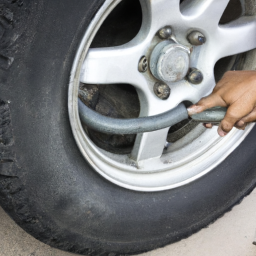Tires are an essential component of any vehicle, and they need to be maintained regularly for optimal performance. Tire maintenance involves checking the pressure, tread depth, alignment, and balancing, which collectively ensure that the vehicle handles well and provides a smooth ride.
When tires are not maintained properly, they can cause a number of problems. For instance, if tire pressure is too low, it can lead to poor fuel economy and excessive wear and tear. On the other hand, if tire pressure is too high, it can cause uneven wear and reduce the tire’s grip on the road. Similarly, worn-out tires with shallow tread depth can cause hydroplaning in wet conditions, which can be dangerous.
To avoid such issues, it is essential to follow a proper tire maintenance regime. The first step is to maintain the recommended tire pressure, which can be found in the owner’s manual or on a sticker attached to the driver’s side door. Tire pressure should be checked at least once a month and before long trips. A tire pressure gauge can be used to measure the pressure accurately.
Secondly, tire tread depth should also be checked regularly. This can easily be done using a penny. Insert the penny upside down into the tread groove; if the tread covers Lincoln’s head, then the tire is in good condition. However, if the tread does not reach Lincoln’s head, the tire needs to be replaced as the tread is too shallow.
Thirdly, wheel alignment and balancing should be checked frequently. Wheel alignment involves adjusting the angles of the wheels to ensure that they are parallel and perpendicular to the ground. This ensures that the tires wear evenly and the vehicle handles well. Balancing, on the other hand, involves ensuring that the weight of the wheels is distributed evenly, which reduces vibration and improves handling.
Lastly, it is essential to pay attention to the condition of the tires. Cracks, bulges, or any other signs of damage can indicate that the tire needs to be replaced. Even if the tire appears to be in good condition, it should be replaced after six years to avoid any safety risks.
In conclusion, maintaining proper tire health should be a part of every vehicle owner’s routine. Regular checks for pressure, tread depth, alignment, and balance can significantly improve a vehicle’s handling, fuel economy, and durability. It ensures that the ride is smooth and safe, and the tires last longer. However, in case of any signs of damage, it is essential to replace the tire to avoid any safety risks.

